-
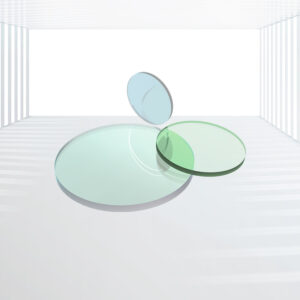
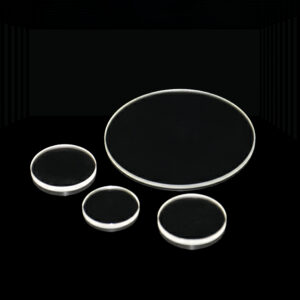
Broad Transmission Range: High transmission from 0.2 µm to 11.0 µm, suitable for both UV and IR applications.
Low Refractive Index: ~1.48, ensuring high transmission rates without the need for anti-reflection coatings.
Radiation Resistance: More resistant to high-energy radiation compared to CaF2, making it suitable for harsh environments.
Thermal Stability: Can endure temperatures up to 800 °C when dry, although sensitive to moisture at higher temperatures.
Extended LWIR Transmission: Transmission range stretches about 1 micron further into the LWIR spectrum compared to CaF2.
Applications: IR spectroscopy, thermal imaging, UV applications, high-energy radiation environments, etc.
-
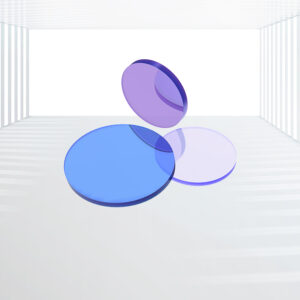
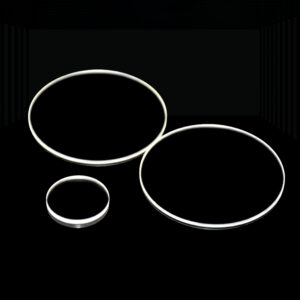
Broad Transmission Range: High average transmission from deep UV to near IR (180 nm to 8 µm) makes CaF2 windows versatile for various applications.
Low Absorption Coefficients: Ensures minimal signal loss and high optical efficiency.
Low Chromatic Dispersion: Minimizes the spreading and distortion of light, maintaining high-quality optical signals.
High Damage Threshold: Suitable for high-power laser applications.
Chemical Resistance: Durable and resistant to chemical corrosion, suitable for harsh environments.
Low Group Velocity Dispersion (GVD): Ideal for femtosecond IR lasers, providing superior performance.
Applications: Spectroscopy, fluorescence imaging, thermal imaging, excimer lasers, femtosecond IR lasers, etc.
-
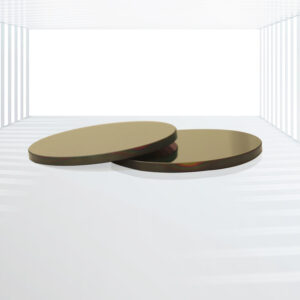
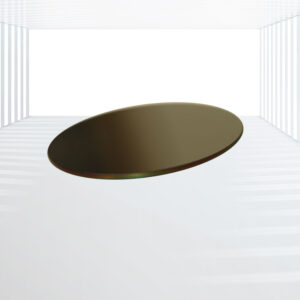
Broad IR Transmission Range: Germanium windows provide excellent transmission in the 2 µm to 14 µm range, making them ideal for MWIR and LWIR applications.
Low Dispersion: The low optical dispersion of Germanium ensures minimal distortion and accurate transmission of IR signals.
Ruggedness: Germanium is more rugged compared to other IR materials, providing durability and reliability in demanding environments.
Chemical Inertness: High chemical inertness makes Germanium windows resistant to harsh chemical environments.
High Refractive Index: With a high refractive index, AR coatings are necessary to achieve high transmission efficiency.
Applications: Thermal cameras, IR imaging, long-pass filters, protective windows, etc.
-
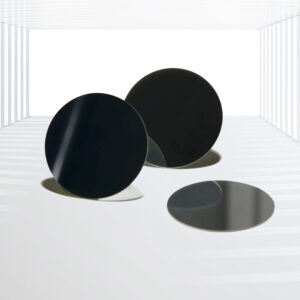
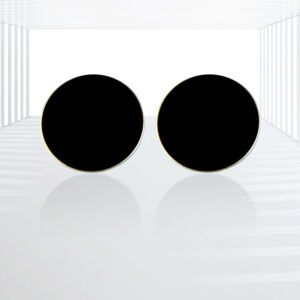
Custom Solutions: Kingwin Optics offers custom infrared ND filters with metallic coatings on Germanium substrates. These filters are designed to provide even attenuation over a wide range of infrared wavelengths, making them suitable for a variety of applications in thermal imaging, spectroscopy, and laser systems.
Performance: The ND coatings are optimized for performance at 2.2 microns and can effectively attenuate light across wavelengths up to 15 microns. This broad coverage ensures versatility and high performance in diverse infrared applications.
Applications: Thermal Imaging, Spectroscopy, Laser Applications, etc.
-
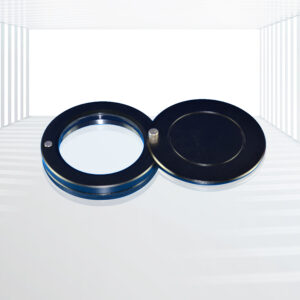
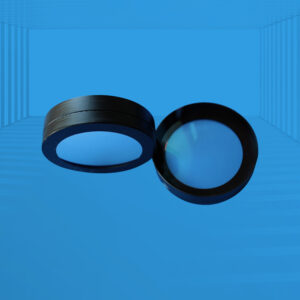
Safety: Provides a secure method to inspect energized equipment, significantly reducing the risk of arc flash incidents.
Efficiency: Decreases inspection time by allowing thermal cameras to view equipment without dismantling panels or doors.
Versatility: Suitable for a wide range of applications, from electrical equipment to industrial ovens.
Applications: Thermal Cameras for High-Temperature Monitoring, High-Voltage Switchgear Viewing Panes, etc.
-
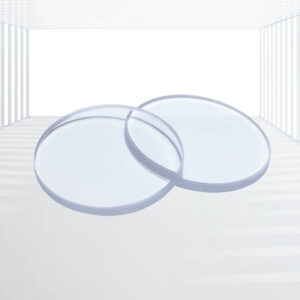
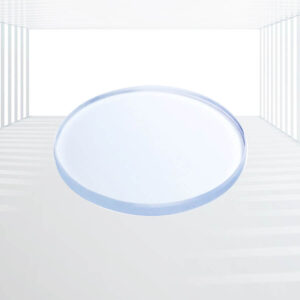
Unrivaled Hardness and Ruggedness:
- Sapphire has a Mohs Hardness of 9, making it the second hardest material after diamond.
- Extremely resistant to scratches and abrasions, ensuring clear optical apertures even under attack from sand/grit.
- Ideal for applications involving splattering abrasive particles, such as drilling viewport windows, protective laser processing windows, and gun sights.
Thin and High-Pressure Resistant:
- Due to firm internal covalent bonding, sapphire windows can be manufactured thinner without fracture compared to dielectric materials.
- Capable of withstanding high pressure, making them suitable for aviation and deepwater contexts.
High-Temperature Tolerance:
- Sapphire has a working temperature limit of up to 1600℃ and a melting point of 2000℃.
- High thermal conduction provides a unique advantage in handling high-temperature situations compared to other optical materials.
- Great options for high-temperature plasma chambers, combustion chambers, etc.
Solid Chemical Inertia:
- Sapphire exhibits chemical inertia to common acids/alkalines, with the exception of hot caustic salts.
- Outperforms other materials in coping with corrosive chemicals and erosive atmospheres.
- Suitable for applications in pharmaceuticals, medicines, and chemical facilities.
Broad Spectral Transmission:
- Sapphire windows offer a broad spectral transmission range of 150nm-5500nm.
- Compared to N-BK7 and UV Fused Silica, sapphire excels with better UV functions, broader IR transmission, and less IR absorption.
- Ideal for critical optical operations in multi-spectrum applications.
Applications: Optical Applications, Protective Applications, Extreme Environments, Chemical and Pharmaceutical Industries, etc.
-
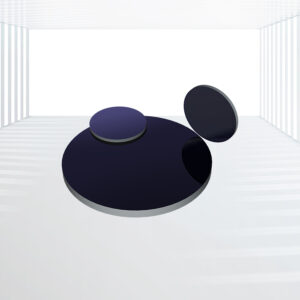
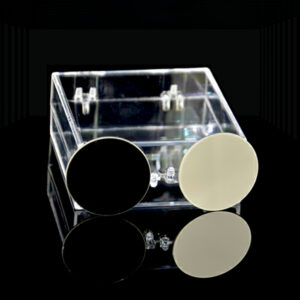
Excellent IR Transmission: CZ silicon is optimal for MWIR (3-5 μm) applications, while FZ silicon is suitable for LWIR (8-12 μm) due to its reduced absorption at 9 μm.
High Thermal Conductivity: Silicon’s high thermal conductivity makes it suitable for high-power laser applications.
Low Density: With a density of 2.329 g/cm³, silicon is lighter than germanium (Ge) and zinc selenide (ZnSe), making it ideal for weight-sensitive designs.
Durability: Silicon windows are chemically and abrasion-resistant, making them durable and suitable for challenging environments.
High Hardness: Silicon is the hardest material that is transparent to light in the 1000-1600 nm range, providing excellent durability and scratch resistance.
Applications: Lasers, IR imaging, weight-sensitive designs, etc.
-
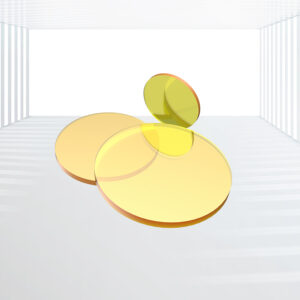
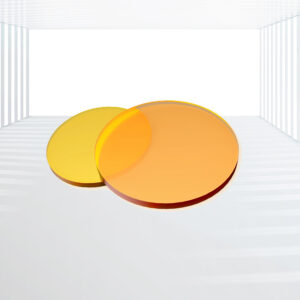
Broad Transmission Range: ZnSe windows provide excellent transmission from 0.6 μm to 16 μm, making them versatile for various IR applications.
Low Absorption Coefficient: The low absorption in the IR range ensures minimal signal loss and high transmission efficiency.
Low Chromatic Dispersion: This property minimizes signal distortion, enabling accurate transmission of IR radiation.
Thermal Properties: High thermal shock resistance and low absorption make ZnSe windows suitable for thermally demanding applications.
High-Power CO2 Lasers: ZnSe windows are ideal for use in high-power CO2 lasers due to their outstanding thermal properties.
Optical Purity: Made from high-purity CVD ZnSe grown in the USA, ensuring superior optical quality.
Applications: CO2 lasers, thermal imaging cameras, IR systems, etc.
-
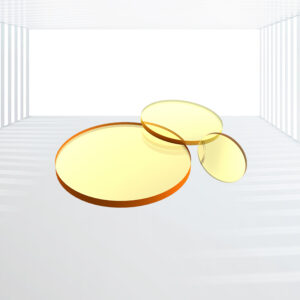
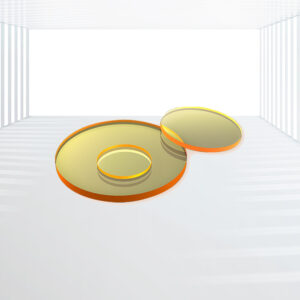
CVD ZnS Windows:
- Thermal Imaging Systems: Ideal for forward-looking infrared (FLIR) applications in the LWIR range.
- Extreme Conditions: Suitable for use as exterior IR windows on aircraft frames due to their high fracture strength and durability.
Multispectral ZnS (Cleartran) Windows:
- Visible and Infrared Systems: Exceptional for applications requiring broad-spectrum transmission from visible to IR regions.
- Laser Rangefinders: Suitable for use in laser rangefinders due to their excellent optical properties.
- Detectors: Perfect for mid-wave infrared (MWIR) and long-wave infrared (LWIR) detectors.

















